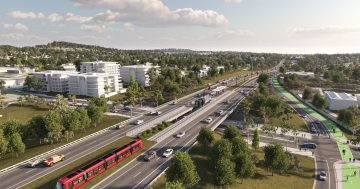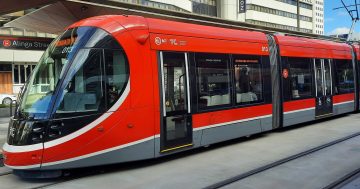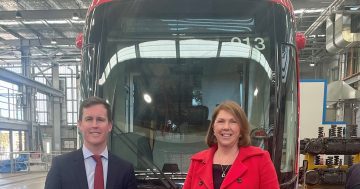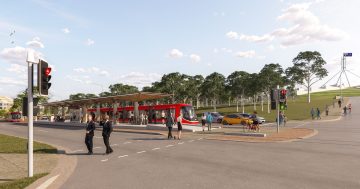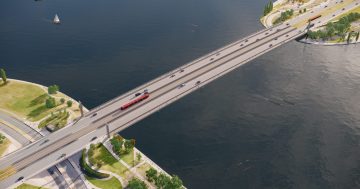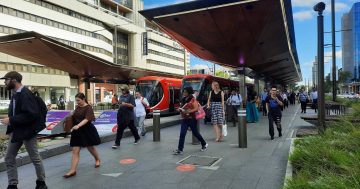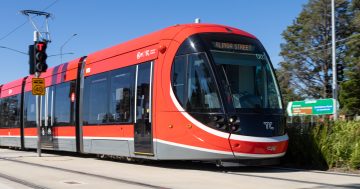
Late last year a caller to 666 Chief Minister Talkback asked then Chief Minister Katy Gallagher why letters the caller had individually addressed to each Legislative Assembly member had not been received. Ms Gallagher’s response was that the letters were opened and forwarded to the appropriate minister, as per standard practice.
These letters each contained technical information on an alternative to Canberra’s light rail system. The intention was to make each member aware that there were other options and at least one of these was both faster and cheaper than trams. If the individual members had such information, they could have participated much more meaningfully in the debate over transport options.
The interception of this information prevented meaningful and knowledgeable debate on what is a very expensive proposal. The implementation of a new transport system will inevitably change the face of Canberra permanently for good or ill, so coming to the optimum solution is imperative.
More generally, how can we have a democratic political system when first hand primary sources of information appear to be purposefully kept from our elected representatives.
This is just one example, but it leads me to question how much primary data has been diverted away from our elected Assembly members over the years. This must be seriously affecting the quality of the decisions being made by our governing body and the consequences which flow on result in our having a poorer governed community. Good decision making is only possible when all the facts are known. One can only wonder about the reasons for diverting information away from Assembly members, so that they generally have to work only on the information provided by the relevant ministers.
Subsequently the same person called 666 Chief Minister talkback earlier this year and spoke to Chief Minister Andrew Barr. The caller asked him about the lack of due process in selecting a transport system for Canberra and why transport solutions other than trams or buses were not considered.
Minister Barr appeared somewhat surprised and asked if there were alternatives. When told there were, he asked for details which the caller provided to the assembly entry that afternoon. The folder of technical information was handed to someone purporting to be from the Chief Minister’s office, who said he was aware of the Chief minister’s on-air request. On checking with the Chief Minister’s office several days later, the caller was told that the folder had disappeared.
Minister Barr’s office responded to the caller’s on-air query regarding the lack of due diligence in the selection process, but the letter did not address that issue at all. The caller then wrote a detailed answer to that letter which was then included in a third copy of the technical information folder. This folder and the letter were taken down to the ABC office in Dickson during a subsequent Chief Minister talkback. It was taken into the studio and presumably handed to the Minister Barr or his staff by an senior ABC staff member, but no acknowledgement for the technical information nor to the letter has been received to date.
As noted above, all the disappearing folders contained technical information on an alternative to the tram.
The example included in these folders was for a light weight overhead rapid transit system which would suspended on poles above the roadway. Hence it would not be slowed by other traffic, nor would it interfere with the flow of other traffic on the road below. But this is just one alternative of several which could do the job better and cheaper than trams or buses.
Any project of this magnitude should have been fully investigated before committing to any one technology. After all, the electric tram dates back to the mid 1880s, surely there has been some technical advances since then, real advances, not just jazzed up fancy bodywork on essentially 130 year old bogies.
Detailed searches did not uncover any technical investigations of transport options having been done in the past, only financial viability reports done by accounting firms on tram/light rail systems, with a bit also on the cost of express buses on bus lanes (which were a cheaper option and had similar trip times). Nothing else showed up in this search and various ministers in the past have confirmed in public meetings that trams were the only option considered.
The whole tram/light rail is saga is a dark, mysterious, dismal, impenetrable swamp. The secrecy is very likely to be hiding all sorts of hidden pitfalls and quicksand pools. The problem however is that the hidden dangers will not really affect those responsible for the pitfalls, which could well bring the project down. The defects and costs will all ultimately be sheeted home to the ACT taxpayers, who will have to pay for the flawed transport decision making process, not the perpetrators! All too often these perpetrators move on leaving the mess behind for others to face.
Before committing to any transport mode a full independent investigation of all available options available should have been carried out.
Capital costs, running costs, noise, convenience, speed/ travel times, environmental impact etc. should all have been evaluated for each transport mode and the results for each published for all to see before moving on to the design stage.
Only by fulfilling these due diligence investigations can the best solution for the long term be implemented. If a private institution were to embark on a project of the magnitude of the tram system without doing due diligence investigations and picked an inferior system which resulted in the shareholders later having to shoulder unnecessarily large debts, there would be serious consequences. The fact that far better and cheaper options were available would cause the financial watchdogs to come down on the institution’s management like a ton of bricks, large fines would be likely to be levied at the very least.
So why is the ACT Legislative Assembly able to adopt a scheme when their shareholders, the residents, have to shoulder unnecessarily large debts when a full investigation has not been done to compare all options, some of which appear to be cheaper, less damaging and faster? The system referred to above is only one of the available options which could meet our transport needs into the future & whatever we do, will transform our city forever. Without a full, transparent, independent investigation we will never know just what we may be missing, nor how much money we may have saved.












